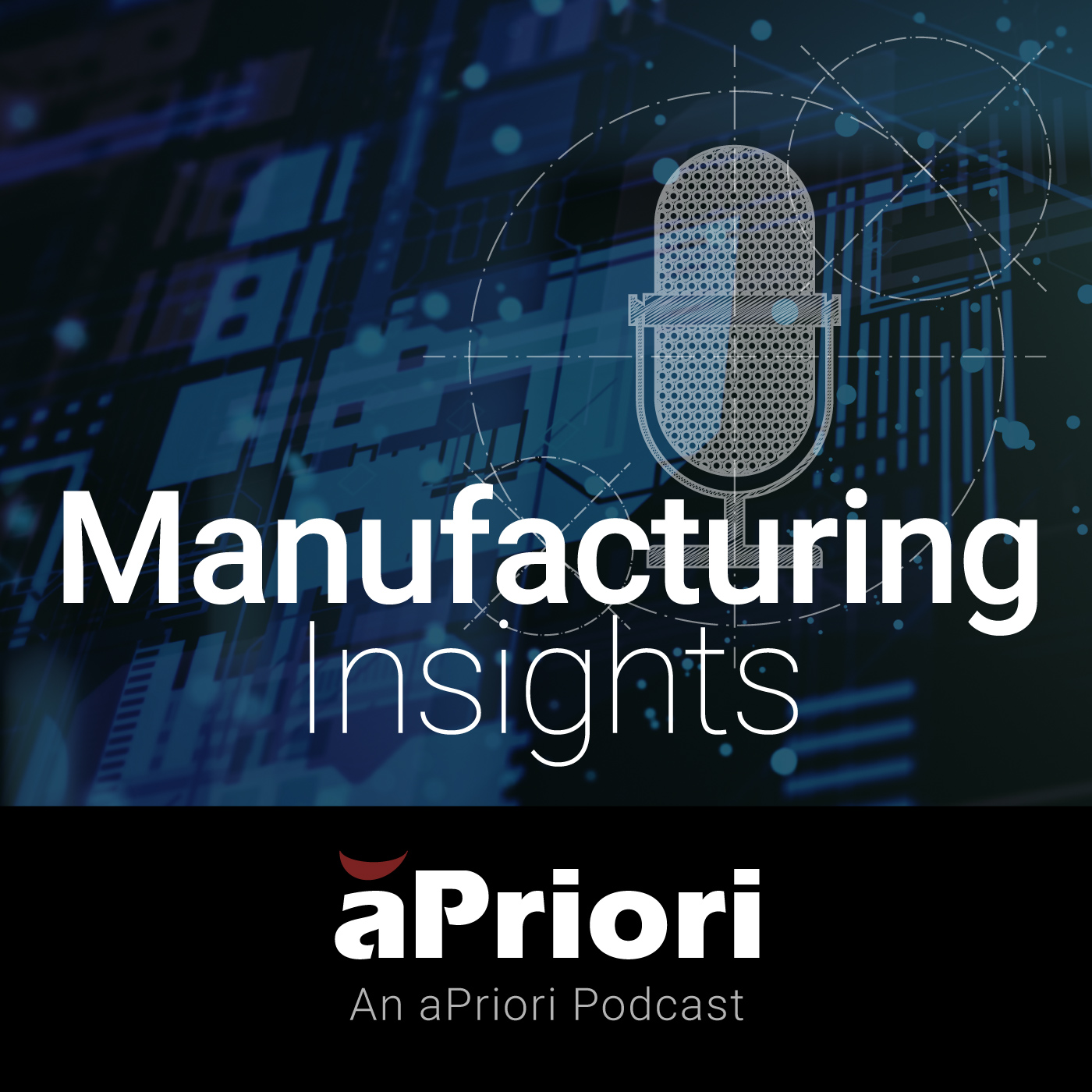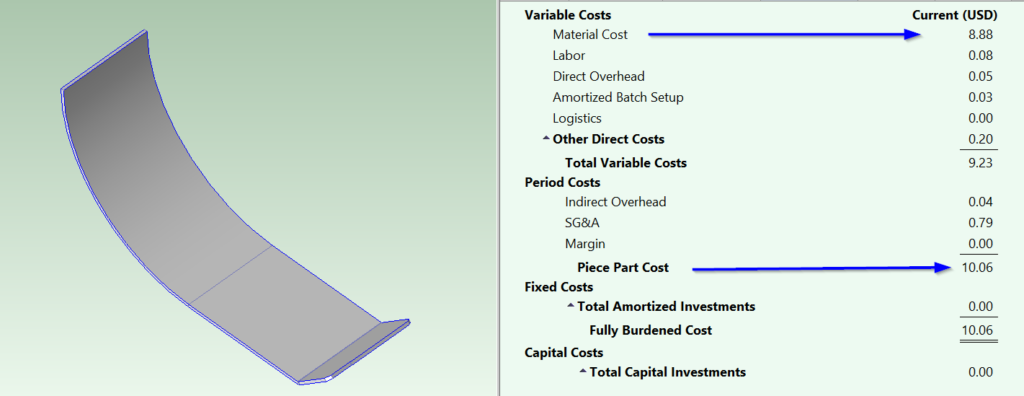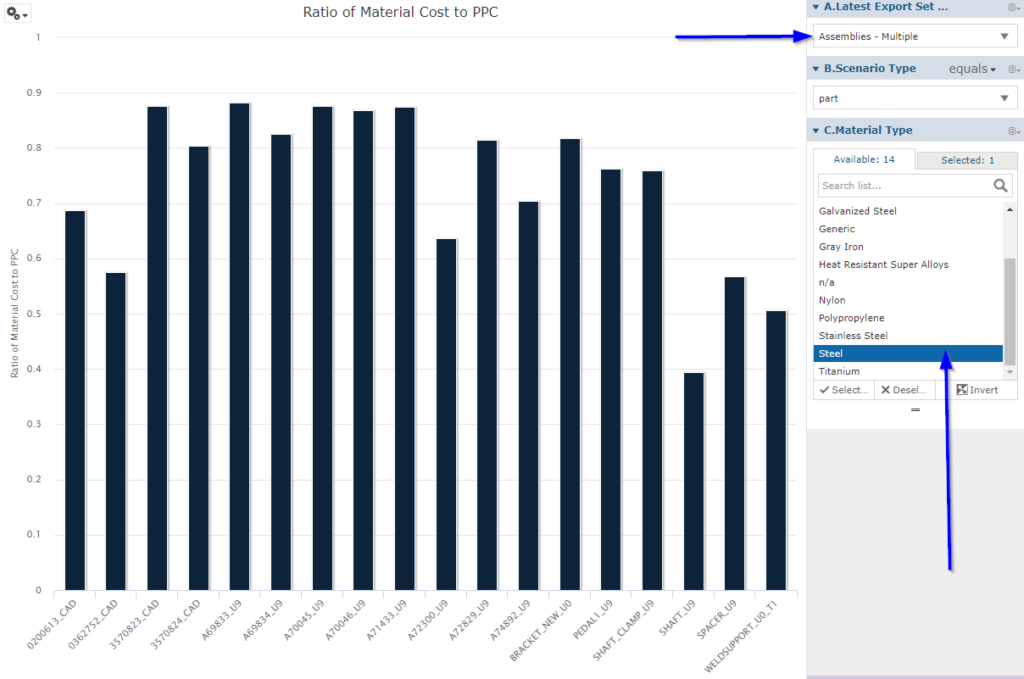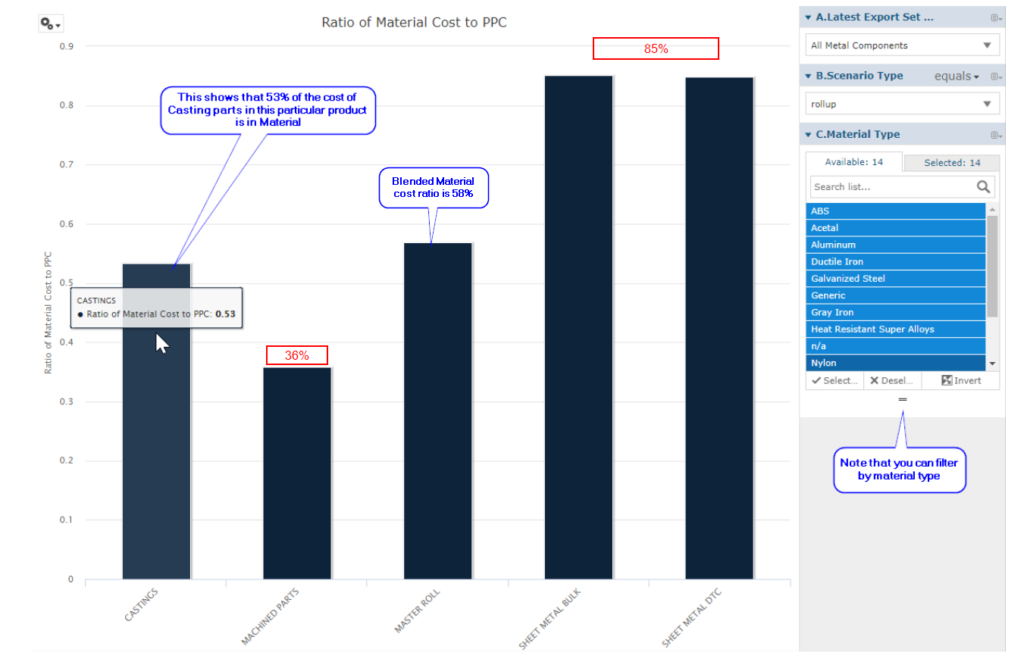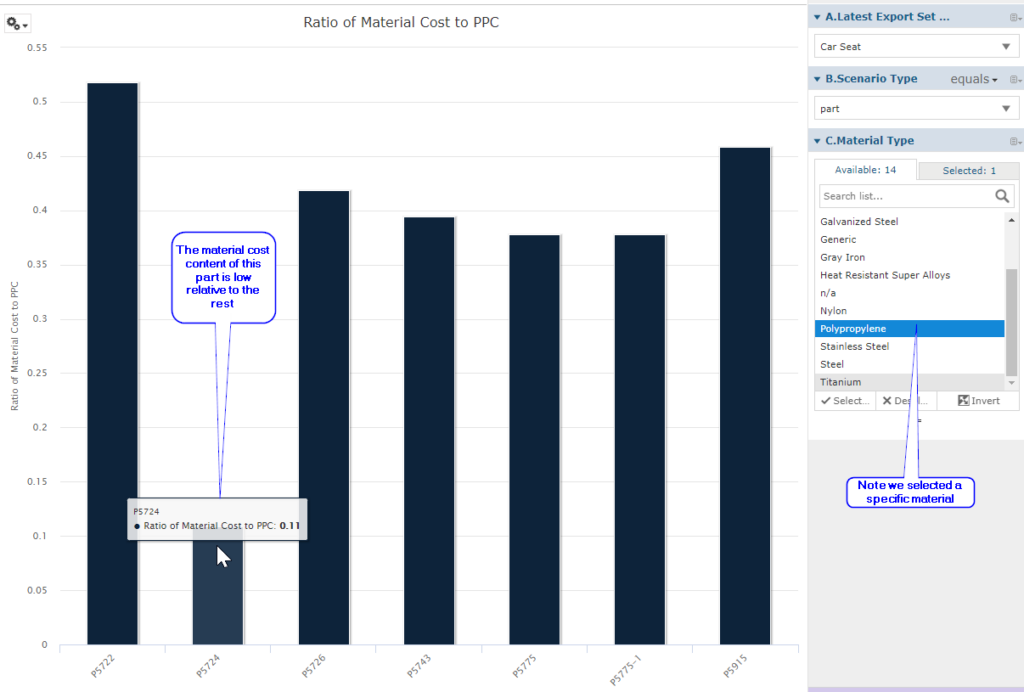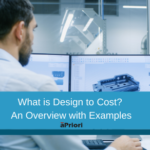
This article is to address how inflated material costs are affecting manufacturing and design cost targets and supplier selection today. We discuss who should absorb the costs, and how you (and in many cases, your suppliers) can reduce material cost increases using digital manufacturing simulation software alongside examples and screenshots.
It is no secret that price increases for raw materials such as steel, copper, and plastics have hit record highs. According to this Bloomberg article, raw materials that are the building blocks of everyday products are in high demand, and the supply chain crisis and environmental factors such as last month’s Texas freeze are contributing to outrageous costs for these materials.
Who Should Absorb the Extra Costs?
Massive material cost increases to your suppliers is real. It’s not fair to ask your suppliers to absorb these extra costs at a loss, as they don’t have any more control over the market cost of materials than you do. For many of your parts, material represents 50% or more of the cost. This obviously creates financial pressure for you and your suppliers.
During these unprecedented times, engineering and sourcing professionals have the opportunity to influence the financial impact of their respective organizations.
How Can You Make an Impact and Reduce Costs Immediately?
There are some immediate actions you can take to reduce costs today:
- Focus VAVE efforts toward reducing the gross amount of material needed to make your parts.
- Audit future purchases to ensure that the price increases your suppliers are passing on to you are indeed warranted and reasonable.
- Consider your large distributor bulk buying contracts that you already have in place. In some cases, it may be worth allowing your suppliers to buy from those contracts.
- If you are unable to modify current contracts, another option is to drop ship the necessary material to the supplier.
- Some large suppliers may have the ability to purchase material at the same or lower rates as you. However, they may not have purchased futures, so don’t ignore them. AND, if they did purchase futures, ensure they pass those savings on to you.
Not sure how to put the above actions into place?
Keep reading…
How Digital Manufacturing Simulation Software Can Help
Digital manufacturing simulation software estimates the cost of your parts by generating a virtual simulation of the manufacture of such parts/assemblies. In the process of doing so, the software generates not only detailed breakdown cost information but also manufacturing information that can help you execute the material cost mitigation steps outlined above (and a whole lot more).
How Digital Manufacturing Simulation Software Works
Digital manufacturing simulation software will generate a cost breakdown that allows users to clearly see what proportion of the cost of a part is in material. Simulation software even allows users to look at collections of parts, such as:
- All the parts bought from a particular supplier
Simulation software can narrow collections down even further such as:
- All of the 1010 steel parts from a particular supplier
- All of the sheet metal parts in a particular product
- All of the castings in this product
How Sourcing Professionals Can Use Simulation Software to Mitigate Costs Immediately
Your management team is already aware of the global material cost increases. Simulation software is a tool you can use to demonstrate leadership during a time of crisis.
The following four examples illustrate how sourcing professionals can quickly assess the price impact from each supplier using digital manufacturing simulation software. Screenshots help to visualize how the software works:
Example 1 – Quickly identify how much of the cost of a part is buried in material A best-in-class simulation software can clearly show the major areas of the cost of each part. With this information, quickly identify the parts to focus on first.
Example 2 –Ratio of material to piece part cost (PPC) for a collection of parts An engineer or buyer can look at all the steel parts that are in the assemblies they are responsible for, and quickly assess which have the most material cost content (and should be prioritized for mitigation).
Example 3: Impact of material price changes to your product Using this type of analysis can quickly help companies assess the impact of material cost fluctuations to their products.
Example 4 – Is the proposed part cost increase warranted? Example 4 is an example of a child car seat using some polypropylene parts. Let’s say you are the manufacturer of the end product; and the cost of polypropylene has gone up by 50%. We can see that the material cost ratios for most parts hover between 38% and 52%. If the supplier of these parts proposes to increase your prices across the board by 21% (50% x 42%), you are now armed with the data to negotiate part P5724 out of that deal. As you can see in the figure, the material cost of this part is significantly lower than the rest of the parts. Therefore, sharing material cost increases with the supplier on this part should result in only a 5% increase.
Watch a pre-recorded demo video of how to use aPriori for sourcing.
How Design Engineers Can Use Simulation Software to Lower Material Cost
Digital manufacturing simulation software generates manufacturing information along with design information. Best-in-class digital manufacturing simulation software can determine the entire manufacturing routing from a CAD model without a manufacturing engineer telling it how the part is made. Therefore, the simulation software provides guidance to the engineer as they are designing (without having to leave the CAD system).
The following example identifies how design changes to this school chair can affect cost (as well as manufacturability):

Example 5 –School chair with high material cost content In this example, an engineer costed this chair using digital manufacturing simulation software. The software revealed that 67% of the cost of this part comes from the material. Since the material used is already the least expensive possible, the engineer must reduce the amount of material in the chair without compromising the integrity of the seat.

Example 6 – Using digital manufacturing simulation software, the engineer can see (in real-time) the impact of the material cost of each design change First, the engineer tapered the thickness of the plastic, both from the top edge of the back to about two-thirds of the way down and from the edge of the seat to about halfway across the seat portion of the part. This change reduced the average thickness from 0.18” to 0.15”.
Material cost, labor, and overhead costs all decreased. This resulted in a decrease of $0.95 cents on a $5 part.

Example 7 – This second design change option for the chair barely moved the needle and the engineer determined it was not worth making The engineer next considered making the hole in the back of the chair slightly larger from its original 5-6” height. This change only resulted in a $0.05 reduction in material cost. The engineer decided that this reduction was not worth risking potential quality issues or increased customer discomfort.
The value of having real-time cost feedback from digital manufacturing simulation software at the speed of design gives engineers the ability to catch these false starts far earlier in the process.
Using Simulation Software to Imitate Other Manufacturing Methods to Compare Costs
Not only does digital manufacturing simulation software provide real-time feedback for sourcing parts and refining designs, but it also affords the ability to imitate other manufacturing methods to compare costs.
This next example displays the power of on-demand manufacturing information.

Example 8 – Are we using the right manufacturing process? In this example, a quick review of the cost of this part identified that there is a 40/60 split between material cost and manufacturing cost. This implies that there may be cost opportunities on both sides of the split.
Because this is a relatively lower volume part (300 units per year), it was purchased as a machined part. In figure 9, simulation software shows the engineer where to look for clues on how to reduce cost.
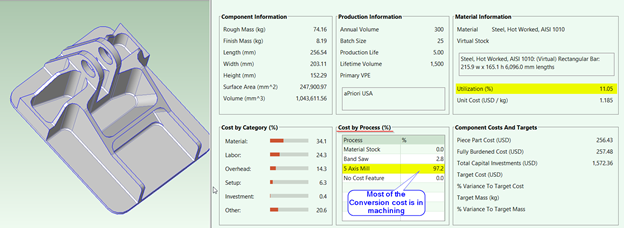
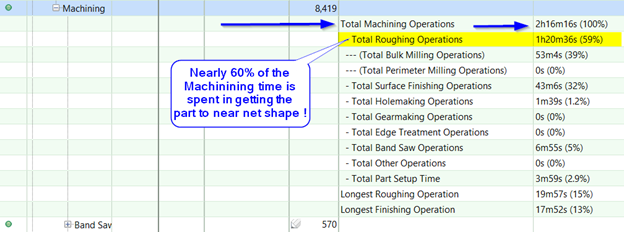
Example 9 – Additional views in the simulation software reveal more insight into where the costs are going, along with actionable clues Using manufacturing simulation to analyze costs, the engineer found that the material utilization was only 11% (which means that nearly 9 lbs. out of every 10 lbs. of raw material would be thrown away!).
Further investigation proved that most of the cost of making the part was in machining, but from roughing operations, not in finishing the part. This finding demonstrated that getting the part to near net shape was costing a lot in both material and manufacturing costs.
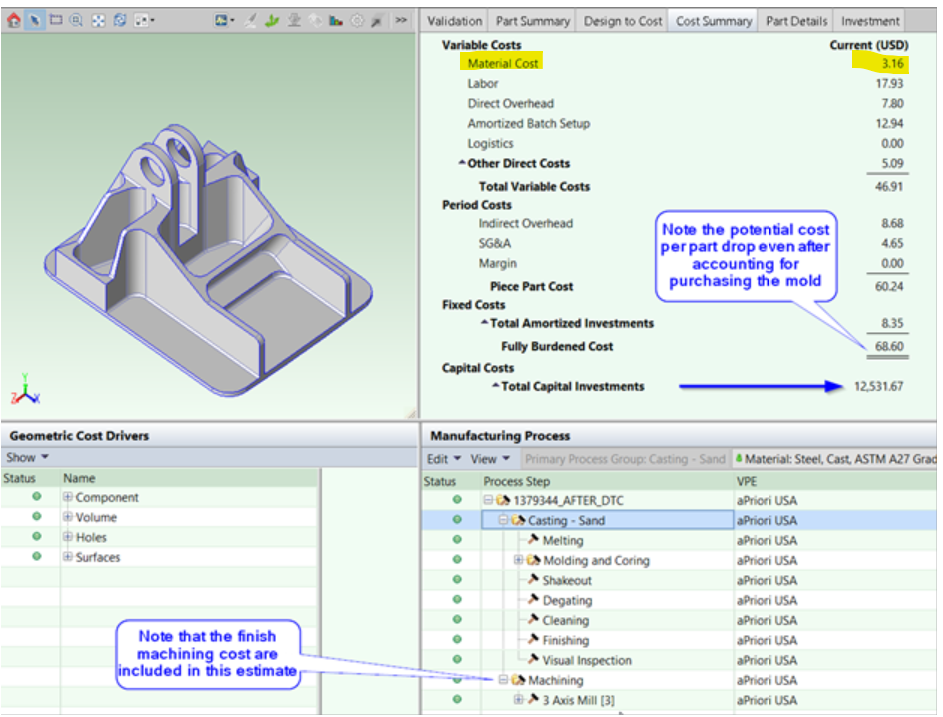
Example 10 – Is there a manufacturing alternative for this part? This part had been designated as a machined part because of the relatively low volume production of 300 units per year. But based on the cost evidence, the engineer investigated sand casting the part – resulting in minuscule material costs of $3 vs. the original $88 – and the manufacturing costs are lower as well.
Watch a pre-recorded demo video of how to use aPriori for design engineering.
A digital manufacturing simulation software solution can help your engineering and sourcing teams fight back against today’s intense material cost increases while making your products less sensitive to material fluctuations in the future.
DISCOVER HOW TO RISK-PROOF YOUR SUPPLY CHAIN
Learn how to use data to mitigate the cost of disruptions and turn supply chain resiliency into a competitive advantage.